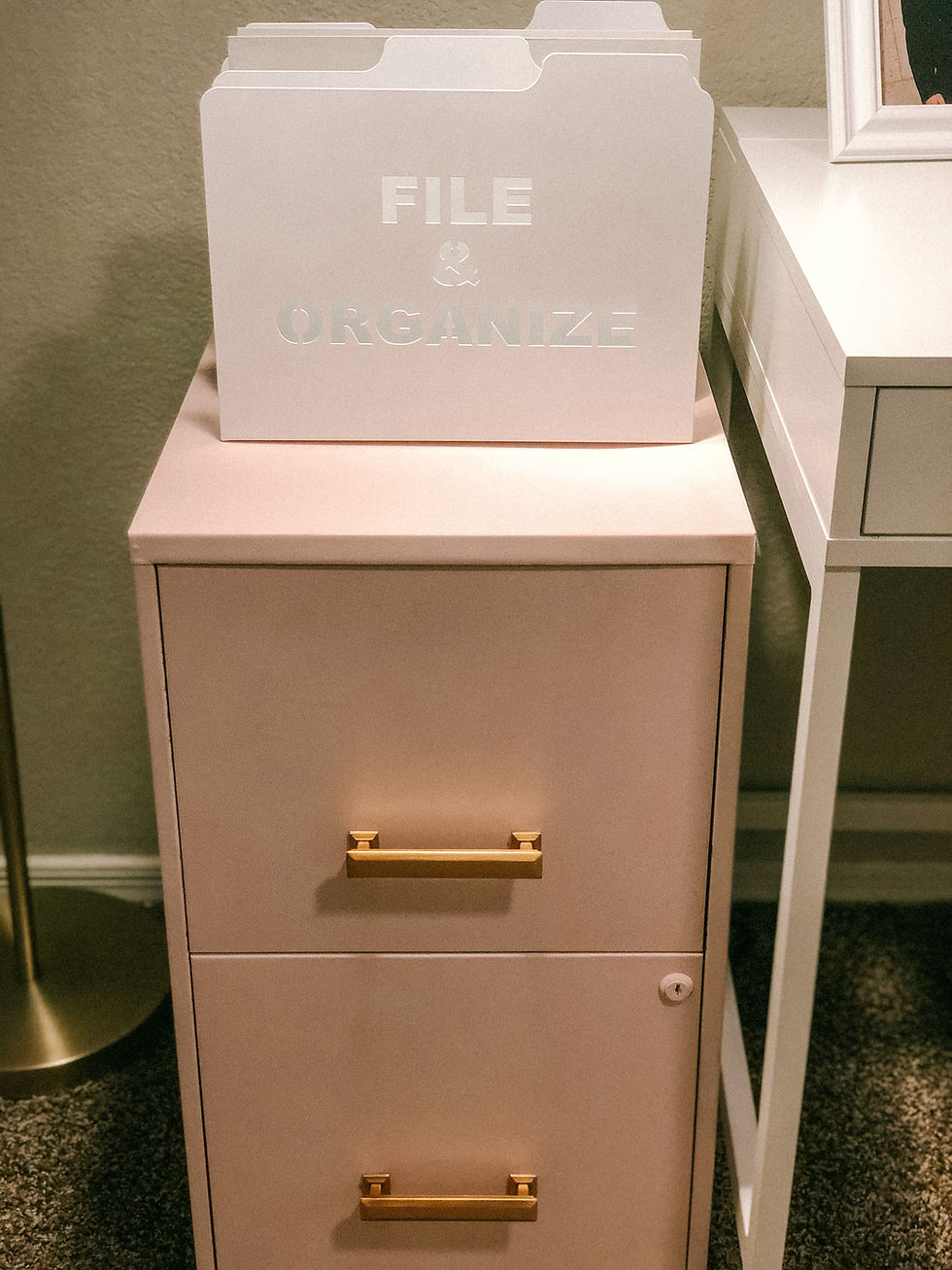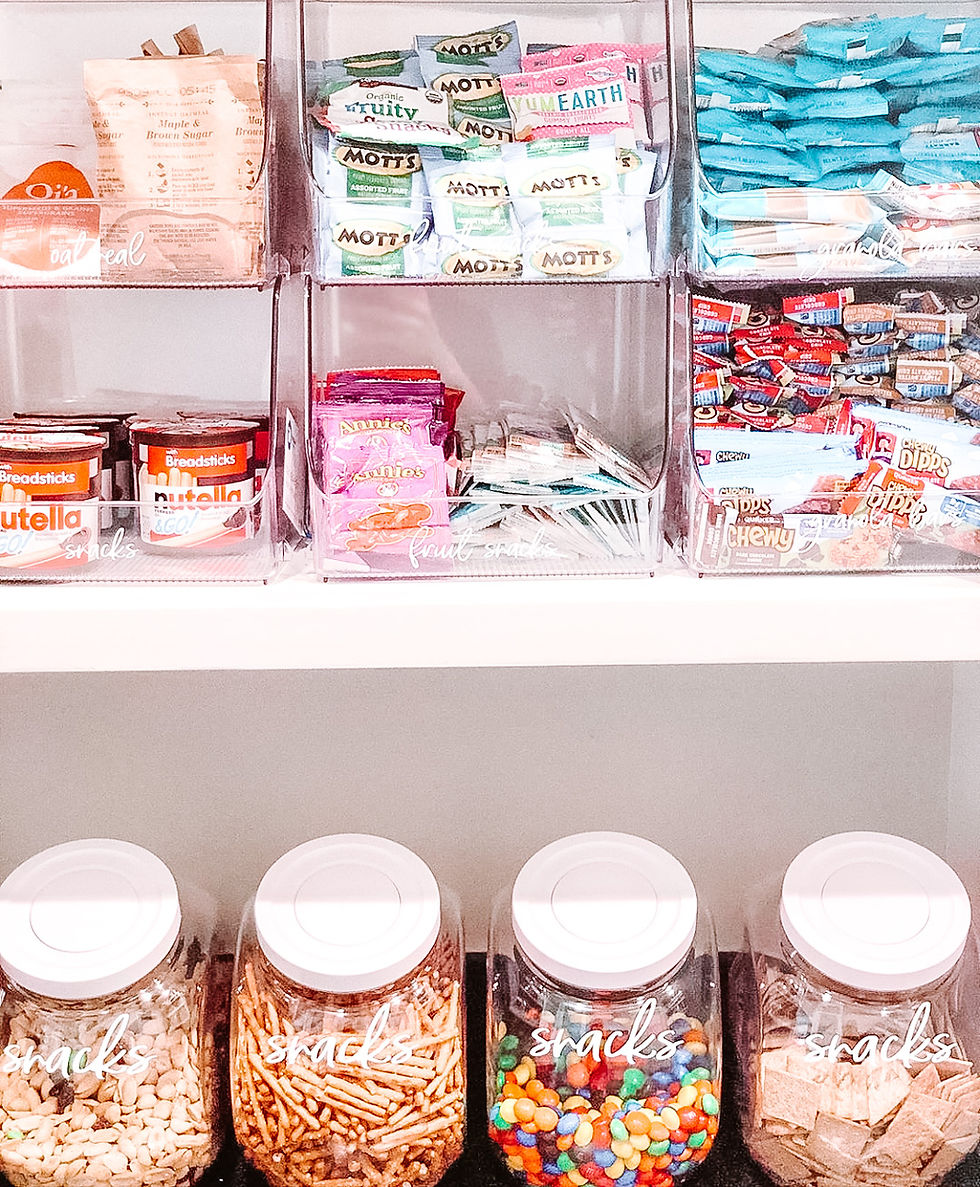How To Create A Home Filing System
- Shalae
- May 11, 2020
- 4 min read
Oh, home filing! SO many moving parts to a single simple-sounding concept! Isn't it amazing how something so seemingly small can have such an impact on your home decor and mental well-being? How homey and inviting is it when you go to a friend's home for a dinner and have nowhere to put your plate because all of the counter space is riddled with mail, schedules, flyers, and stray papers that got away? My guess is not very. I want to help you so you don't become that house!
The Paper Flow
First and foremost, I gotta tell you to LOOK AT YOUR PAPERS. The minute you come into the house or you know you'll have a moment, at a certain time, absorb everything you've just taken into your home. I totally get if it can't happen immediately when you get home, but the point is to, at least once every day, open the mail, read the mail, look at the flyers you were given, see what your kids collected, and know what you're invited to. By taking 5- 10 minutes to just see what you have, you can quickly take a mental note of what you just brought into your home (even if you can't deal with it right now), you can take two more minutes to separate your documents into their "places".

Generally speaking, papers have 1 of 5 places to go:
1. Trash or Recycling Bin - Immediately throw away papers you don't need, to eliminate growing stacks of clutter around your home.
Now you're left with the necessary and organizable papers! Your now much smaller stack can be broken down into 4 piles...
2. "Incoming Papers" - This could be mail, papers brought home from school or work etc
3. "Things to do" - These are papers that need to be acted on. Make sure to add a date for an upcoming event to your calendar/pay a bill/sign a permission slip etc!
4. "Ready to File" - Once you've completed the task of paying a bill (or whatever the task might be), it's ready to be filed away OR added to the pile of "ready to file"
5. Your Filing System, of course! Here's a couple awesome products for creating your filing system:
This gorgeous Safco Flat Files cabinet that can be ordered in a customized color
This super cute (and affordable) wire basket to help separate your piles
These stackable white trays the create the mother of organization systems
If you're having a hard time keeping up with papers coming into your home, I'd suggest finding yourself an organizer that sits on your desk, in a cabinet, or wall-hanging organizer to corral papers and give them an intentional home. You'll want to keep this organizer in the same vicinity as the place where the most paper seems to gather. (Hint: Where you put papers from the kids' school and mail!) So if that's in a main living area of your home, consider using a cabinet or a pretty piece that matches your decor (peep this wire basket). An organizer works well when the organizer has at least 3 "slots" for your papers - as mentioned, 1 for incoming paper, 1 for papers that need acted on, and another for papers ready to be filed. The point is to have a place for all the papers as they enter your home.
The System
So your papers are organized, you finally have a day off, and you're ready to actually file them. We recommend you do a weekly empty of your organizer(s) for your separated papers to prevent pileup. Setting up your filing system can feel overwhelming, but it's so much easier than you think!
Filing

Sort into categories and sub-categories...
Bills: utility bills, mortgage bills, service bills, doctor bills, etc
Insurance: home insurance, auto insurance, health insurance, life insurance etc
Warranties: home warranty, auto warranty, appliance warranties, other warranties, etc
Create a file for every category and sub category
Use a labeling system in order to find the correct file easily. I would suggest labeling in MAIN categories as well as SUB CATEGORIES.
For example: If you're using a file cabinet with hanging files, label the MAIN category with a tab placed in the middle (just one tab for that category). Then for every sub-category, label with a tab placed on the left.
The Kids
A system I like to use for families with children, is this: create 2 folders for every child, with their name on the outside:

Folder 1 will hold that child's informational school papers
Folder 2 will hold their informational papers for any activities they're involved in.
When your child comes home with those papers with info (usually at the beginning of a school year or season for activities), take note of any important information. Add dates to calendars if necessary and then file that paper away into it's corresponding folder. For families with more than one child at the same school, try creating a separate folder for the school info that comes home but doesn't specifically pertain to just one child's classroom.
The second type of papers that come home from school (and other activities) - are art projects and work completed by your child. Again, throw away the papers that don't have any special meaning. For the others that do seem special in the moment, keep them in a temporary holding spot for later review. This could be a bin or basket kept in the child's room OR in a central spot with all siblings bins as well. Once that "temporary" holding spot gets full, take a little bit of time to re-evaluate all papers inside, and decide what is really worth holding onto. From there, you can keep the MOST special papers in a paper keepsake box.

I've found that the most functional way to store my children's paper keepsakes - is similar to the way I store all other important papers: in hanging files. I like to use file boxes and hang file folders labeled such as the following:
I hope you benefited from my filing tips and tricks and I look forward to writing some more tips soon! Let me know on my instagram if you'd like any specific blogs to help you organize your home!





Getting your home interiors done in Bangalore can be tough. What are some of the biggest challenges you've faced? We've compiled a list of the best interior designers in Bangalore to help simplify the process. Take a look!
Ready to give your space a fresh new look? Our home interior design team is passionate about creating environments that are both stylish and uniquely yours. Let's start designing your perfect sanctuary.
Lovely poost